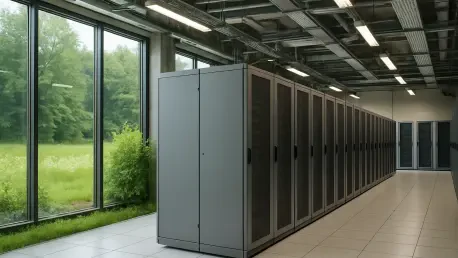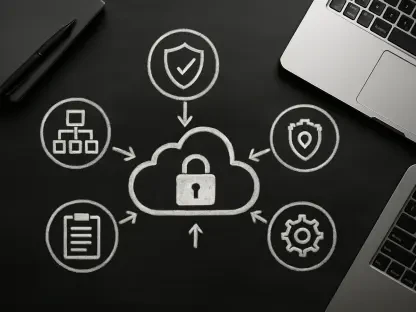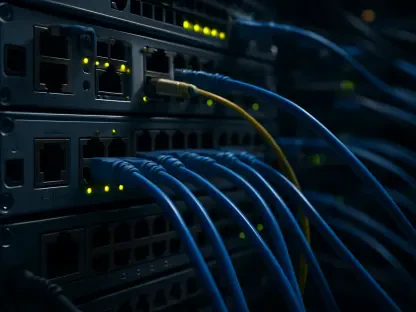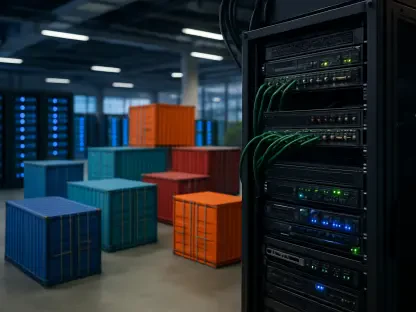What happens when the engines of the digital world, data centers, grind to a halt on their journey toward environmental responsibility? These powerhouses, fueling everything from cloud storage to streaming services, consume energy at an alarming rate, often rivaling the electricity needs of small nations. Yet, despite lofty promises to slash carbon footprints and boost efficiency, the industry finds itself stuck in neutral. This isn’t just a technical glitch—it’s a critical challenge that could redefine how technology and sustainability coexist in an era of unrelenting digital demand.
The Urgency of a Greener Digital Backbone
The importance of sustainable data centers cannot be overstated. As global reliance on digital infrastructure surges, these facilities account for a staggering portion of energy consumption—estimated at 1-2% of the world’s total electricity usage. With climate change concerns mounting, the push for eco-friendly practices is not merely a moral imperative but a business necessity. Rising energy costs and consumer demand for green operations add further pressure. This stall in progress, therefore, raises alarms about whether the industry can keep pace with both technological growth and planetary needs.
This slowdown isn’t a minor setback; it’s a pivotal moment. If data centers fail to address their environmental impact, the ripple effects could undermine global sustainability goals. The balance between powering innovation and protecting the environment hangs in a delicate state, making it essential to uncover why efforts are faltering and what can be done to reignite momentum.
Unpacking the Roadblocks to Eco-Friendly Progress
A recent industry survey of over 1,800 stakeholders reveals a troubling picture: sustainability metrics are either flatlining or declining. Power Usage Effectiveness (PUE), a critical measure of energy efficiency, has shown no significant improvement for several consecutive years. Meanwhile, tracking of key data points like IT consumption has slipped from 89% to 84%, and water usage reporting has dropped sharply from 43% to 27%. These numbers highlight a broader trend of diminished focus on environmental accountability.
Several factors contribute to this stagnation. The explosive rise of artificial intelligence (AI) workloads stands out as a primary driver, with server rack power densities now ranging from 10-30 kW in many facilities. This surge strains resources, especially in newly built or expanding centers, making green targets harder to hit. Additionally, aging infrastructure continues to operate alongside modern, power-intensive systems, creating inefficiencies that are tough to overcome without substantial upgrades.
Commercial priorities and regulatory shifts also play a role. Investments in AI infrastructure often take precedence over sustainability projects, diverting both funds and attention. In some regions, relaxed regulations have reduced the urgency to meet environmental standards, further slowing progress. This mix of operational demands and external pressures creates a complex barrier to meaningful change.
Industry Perspectives: Frustration Meets Reality
Voices from within the sector paint a vivid picture of the struggle. Andy Lawrence, a leading researcher in data center trends, recently noted during a webinar, “There’s a real challenge in effective sustainability reporting. Many organizations are stepping back from ambitious goals or doubting the accuracy of their own data.” This candid admission reflects a widespread sentiment among operators who feel torn between growth and green commitments.
Stories from the field add depth to these concerns. One data center manager shared how a massive AI expansion project consumed so much time and budget that routine sustainability audits were sidelined indefinitely. Such accounts, echoed by hundreds of survey respondents, reveal a recurring theme: while the importance of eco-friendly practices is acknowledged, immediate business needs often overshadow long-term environmental goals. This tension underscores the difficulty of aligning daily operations with broader planetary priorities.
The Heavy Toll of AI’s Energy Appetite
The rapid adoption of AI technologies has emerged as a double-edged sword for data centers. On one hand, AI drives innovation and efficiency in countless sectors; on the other, it demands unprecedented amounts of power. Facilities supporting AI workloads are seeing energy consumption spike, with some racks requiring up to 30 kW—far beyond traditional setups. This trend not only challenges existing infrastructure but also complicates efforts to reduce carbon emissions.
Beyond raw power needs, AI projects often prioritize speed and scale over sustainability. Companies racing to deploy cutting-edge applications may defer energy-efficient upgrades or neglect comprehensive environmental tracking. As a result, the very technology poised to transform industries risks undoing hard-won gains in data center sustainability, creating a paradox that the sector must urgently address.
The scale of this issue is evident in new facilities designed specifically for AI. Many of these centers, built to handle massive computational loads, struggle to integrate green technologies from the outset. Without innovative cooling solutions or renewable energy sources, the environmental cost of AI’s growth could spiral, highlighting the need for strategic planning in future expansions.
Charting a Path Forward: Practical Steps to Recovery
Turning the tide on this sustainability stall requires actionable strategies tailored to current challenges. One promising avenue is the adoption of advanced technologies like liquid cooling, which can manage the high power densities of AI workloads more efficiently than traditional methods. Implementing such solutions could significantly cut energy waste in overburdened facilities.
Equally important is the revival of robust data collection. Standardized reporting tools must be prioritized to restore confidence in sustainability metrics. Even incremental progress, such as consistently tracking water usage or carbon emissions, can rebuild momentum. Additionally, aligning green initiatives with financial benefits—such as reduced operational costs through energy-efficient upgrades—can help justify investments in eco-friendly practices.
Advocacy for clearer regulatory frameworks also holds weight. Stronger guidelines would ensure that environmental accountability isn’t left to chance or corporate discretion. By combining technological innovation, consistent data practices, and policy support, the industry can transform this period of stagnation into a stepping stone for renewed progress, balancing the demands of digital expansion with the imperative of a sustainable future.
Reflecting on a Missed Turn
Looking back, the data center industry faced a critical juncture where sustainability efforts stumbled under the weight of competing priorities. The surge in AI-driven energy demands, coupled with legacy system inefficiencies and wavering regulatory focus, created a perfect storm that slowed years of environmental progress. Metrics that once showed promise, like PUE and water usage tracking, faltered, revealing cracks in the sector’s green ambitions.
Yet, this moment also sparked vital conversations about actionable change. The push for innovative technologies like liquid cooling, alongside a renewed emphasis on data transparency, emerged as tangible ways to steer back on course. Stronger policies loomed as a necessary backbone to ensure accountability didn’t waver again.
Moving ahead, the industry was poised to learn from these challenges by integrating sustainability into the core of future planning. Prioritizing incremental improvements and aligning green goals with business outcomes offered a roadmap to recovery. The path wasn’t easy, but with focused effort, data centers could reclaim their role as leaders in both technological advancement and environmental stewardship.









